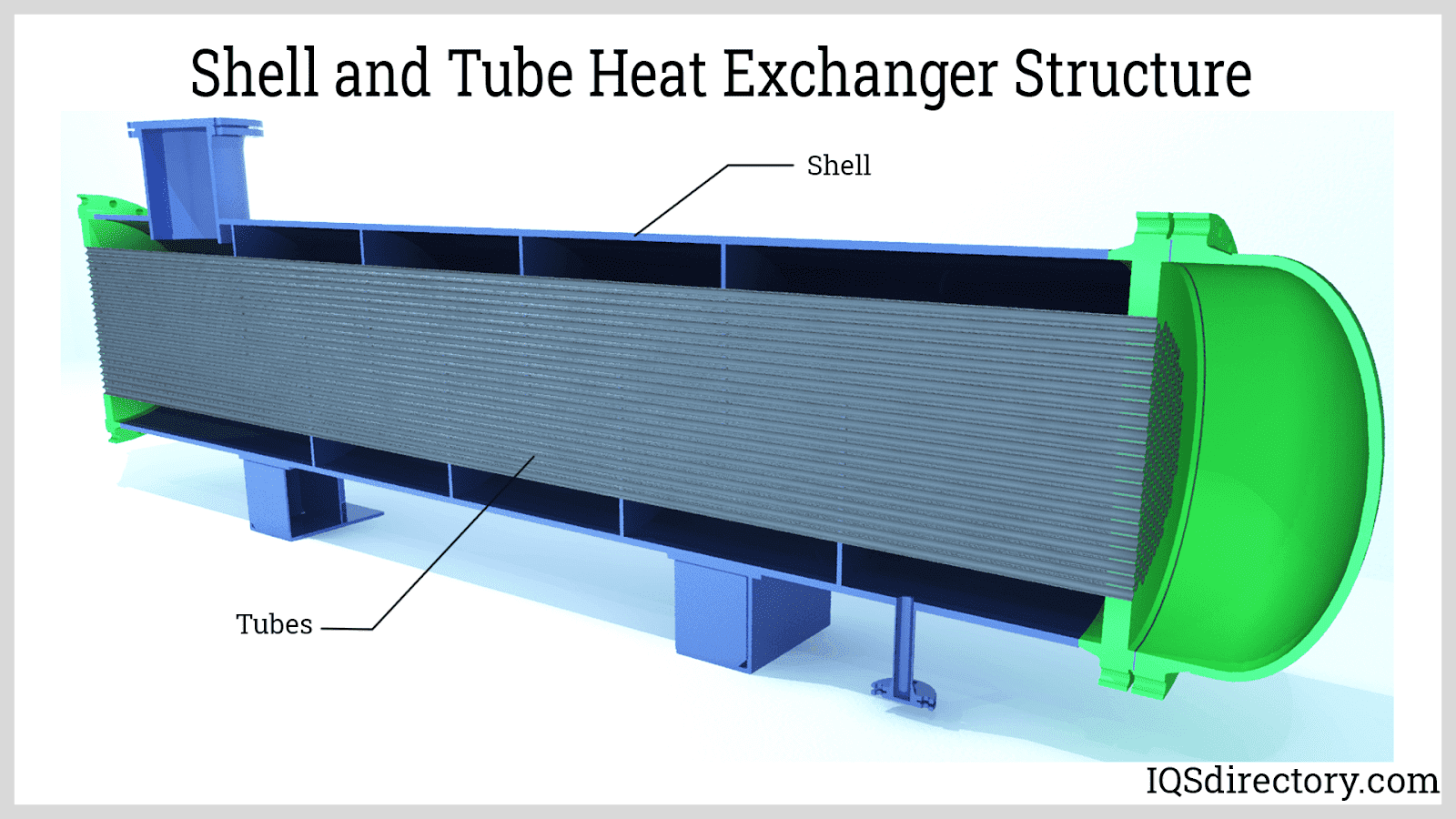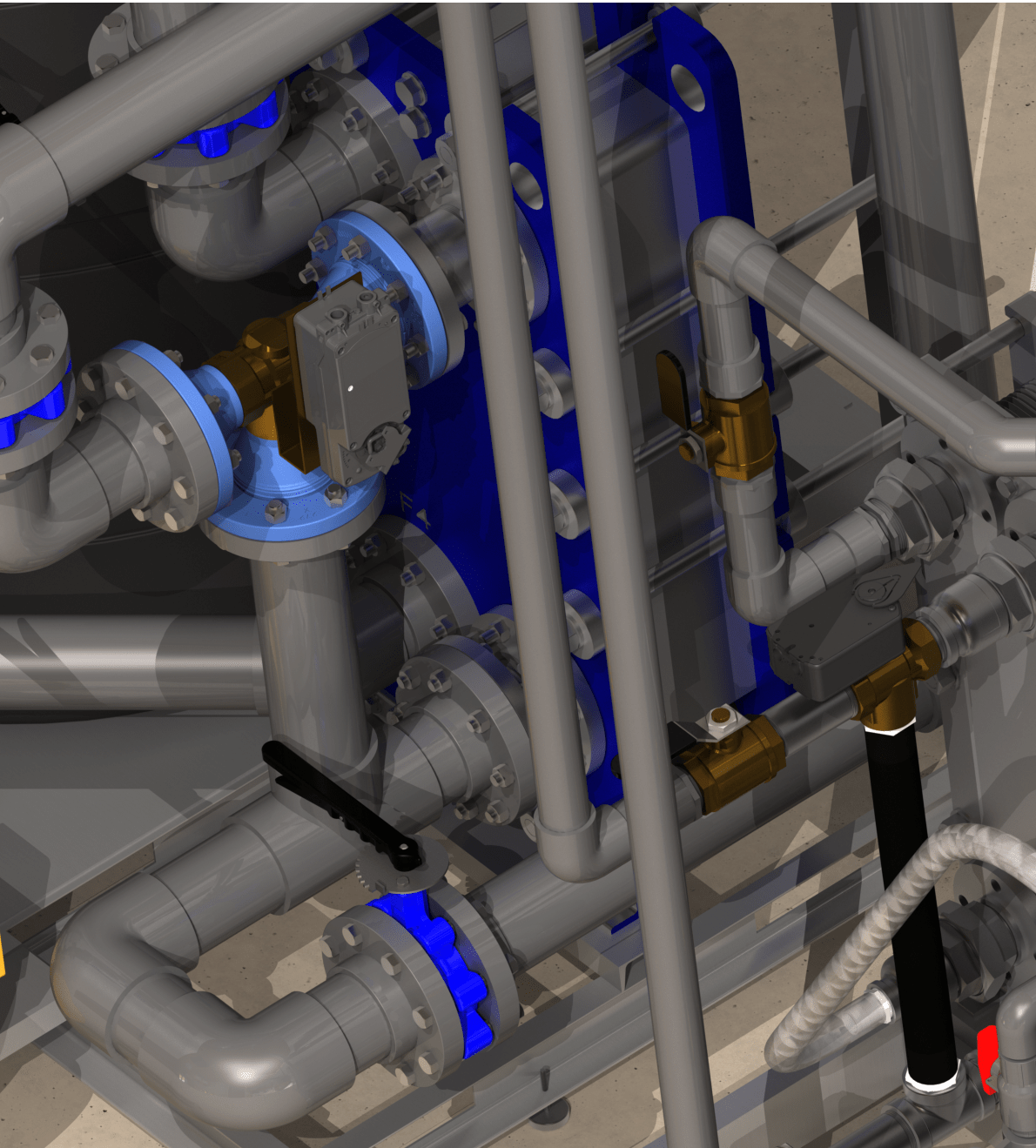How DVS Heat Transfer Systems Are Redefining Energy Efficiency in Industrial Cooling
Wiki Article
A Comprehensive Overview to Selecting the Right Heat Transfer Equipments for Your Needs
Selecting the proper Heat transfer system is vital for functional performance. Various systems satisfy different needs, affected by aspects such as temperature level range and fluid kind. Understanding the concepts behind Heat transfer, such as radiation, convection, and transmission, is critical. Furthermore, evaluating energy resources and maintenance methods can influence lasting performance. A closer exam of these considerations discloses exactly how to customize a system to certain demands. What should one prioritize in this complex decision-making procedure?Comprehending Heat Transfer: Key Ideas and Concepts
Although Heat transfer may seem like a straightforward principle, it encompasses a range of principles that are essential for reliable system style. Recognizing these principles is important for developers and designers that intend to enhance thermal performance in different applications. Conduction, for instance, includes the transfer of Heat through solid products, while convection describes the activity of Heat within liquids. Radiation, an additional crucial concept, explains just how Heat can be moved through electromagnetic waves. Each of these mechanisms plays an essential duty in determining exactly how energy relocates within a system. By extensively comprehending these principles, specialists can make enlightened choices, making sure that Heat transfer systems operate effectively and satisfy the certain demands of their applications
Sorts Of Heat Transfer Equipments: An Introduction
Understanding the concepts of Heat transfer prepares for discovering the various types of Heat transfer systems offered. Heat transfer systems can be classified largely into three types: convection, radiation, and conduction. Transmission involves Heat transfer via solid products, relying upon straight contact in between fragments. Convection, on the various other hand, occurs in fluids (liquids and gases) where the motion of the liquid itself assists in Heat transfer. Radiation entails the transfer of Heat through electromagnetic waves and does not require a medium, allowing it to take place in a vacuum. Each type of system has distinct attributes and applications, making it important for individuals and organizations to thoroughly assess their certain requirements when picking the most appropriate Heat transfer solution.Applications of Heat Transfer Solutions in Various Industries
Heat transfer systems play an essential role throughout various industries, influencing efficiency and item quality. In industrial manufacturing procedures, they facilitate accurate temperature control, while in food and beverage processing, they ensure safety and conservation. Additionally, cooling and heating and environment control systems depend heavily on effective Heat transfer to preserve comfy atmospheres.Industrial Manufacturing Processes

Countless commercial production procedures count greatly on efficient Heat transfer systems to take full advantage of performance and improve product quality. In markets such as metalworking, Heat exchangers play an essential function in keeping suitable temperature levels during welding, casting, and creating. These systems ensure uniform Heat distribution, which is vital for attaining desired material buildings. In the chemical manufacturing market, Heat transfer systems promote specific temperature control throughout reactions, affecting yield and security. In fabric production, effective Heat management is crucial for coloring and ending up procedures, affecting shade consistency and fabric quality. By selecting ideal Heat transfer technologies, makers can boost power efficiency and lower functional costs, ultimately leading to an extra competitive and sustainable manufacturing atmosphere.
Food and Beverage Processing
Efficient Heat transfer systems are similarly essential in the food and beverage processing industry, where maintaining optimal temperatures is important for food security and high quality. These systems play a crucial function in procedures such as sanitation, food preparation, and pasteurization, making certain that products are safe for intake and preserve their dietary value. Heat exchangers, for instance, effectively transfer Heat between fluids, enhancing energy use while reducing temperature variations. Additionally, refrigeration systems are basic for protecting disposable items and extending life span. The selection of Heat transfer modern technology directly influences functional efficiency and product honesty, making it necessary for food and drink makers to select the ideal systems customized to their certain handling requirements. This cautious selection ultimately adds to customer complete satisfaction and food security.
A/c and Environment Control
While lots of markets rely upon Heat transfer systems for effectiveness, COOLING AND HEATING (Home Heating, Air Flow, and A/c) plays a necessary duty in preserving interior environment control across different settings. These systems utilize Heat transfer concepts to control humidity, air, and temperature top quality, guaranteeing comfort and safety and security in property, business, and commercial atmospheres. Effectively created heating and cooling systems boost energy performance, decrease functional prices, and decrease environmental impact. In commercial structures, for example, efficient climate control adds to worker performance and client complete satisfaction. In see this website commercial applications, HVAC systems assist preserve excellent conditions for equipment operation and item conservation. Selecting the best Heat transfer system is crucial for meeting specific environment control requirements and attaining total system performance.Examining Power Resources for Heat Transfer Systems
In assessing power resources for Heat transfer systems, a comparison of sustainable energy options and nonrenewable fuel source considerations is necessary. Eco-friendly resources, such as solar and wind, deal lasting options that can decrease environmental impact. Conversely, nonrenewable fuel sources stay prevalent due to their recognized infrastructure and power thickness, triggering a mindful analysis of both alternatives.Renewable Energy Options

Nonrenewable Fuel Source Considerations
Reviewing nonrenewable fuel source factors to consider is essential for the performance and sustainability of Heat transfer systems. Fossil gas, such as gas, oil, and coal, are typical energy resources that offer significant Heat outcome, making them preferred options for industrial and domestic applications. Their ecological influence, including greenhouse gas discharges and resource deficiency, raises issues. When picking a heat transfer system, it is essential to evaluate the schedule, cost, and regulative factors related to these fuels. Additionally, the efficiency of nonrenewable fuel source systems should be considered, as higher effectiveness can minimize some environmental disadvantages. Inevitably, a balanced strategy weighing performance and sustainability can assist decision-makers towards the most suitable Heat transfer option for their certain requirements.Elements to Think About When Choosing a Warm Transfer System
Picking an ideal Heat transfer system needs careful consideration of different aspects that can substantially affect efficiency and efficiency. One crucial variable is the operating temperature level variety, which determines the materials and style suitable for the application. Furthermore, the sort of liquid made use of in the system-- whether gas or fluid-- influences Heat transfer efficiency and compatibility. The system's size and capacity need to line up with the certain requirements of the operation to stay clear of inadequacies. Power resource schedule is likewise crucial, affecting operating expense and sustainability. In addition, the installment atmosphere, including area restrictions and availability for maintenance, plays a considerable role in system selection. Lastly, regulatory conformity and security requirements must be considered important link to ensure the system fulfills all legal demands.Upkeep and Effectiveness Optimization for Heat Transfer Solutions
Preserving Heat transfer systems is essential for making sure maximum efficiency and durability. Regular maintenance activities, such as cleansing Heat exchangers and inspecting insulation, assistance prevent performance losses due to fouling and thermal linking. Furthermore, monitoring system specifications, consisting of pressure and temperature level, permits early discovery of abnormalities, lessening downtime and expensive repairs. Applying a precautionary upkeep schedule can optimize performance and prolong the lifespan of parts. Updating to advanced control systems can improve operational efficiency by readjusting to varying conditions and tons. By prioritizing maintenance and performance optimization, operators can achieve decreased power intake, lower operational expenses, and enhanced general system dependability, ultimately causing much better source application and an extra lasting operation.Future Patterns in Heat Transfer Technologies
As industries progressively prioritize sustainability and power effectiveness, future patterns in Heat transfer innovations are established to undertake substantial transformations. Developments such as sophisticated materials, including carbon nanotubes and nanofluids, promise boosted thermal conductivity and performance. In addition, the integration of renewable power resources right into Heat transfer systems is getting momentum, promoting environment-friendly remedies. Smart technologies, including IoT sensing units, are anticipated to revolutionize tracking and control, allowing real-time information evaluation for enhanced performance. The development of modular and small systems will help with less complicated setup and upkeep, catering to varied applications. These improvements suggest a shift in the direction of more lasting, effective, and adaptable Heat transfer options, lining up with international energy goals and environmental criteria.
Regularly Asked Concerns
What Are the Ecological Influences of Heat Transfer Equipments?
The environmental effects of Heat transfer systems can consist of greenhouse gas emissions, energy intake, and potential thermal pollution. Additionally, incorrect disposal of inadequacies and materials can add to source depletion and ecological community disruption.How Do I Compute the Cost-Effectiveness of a Heat Transfer System?
To calculate the cost-effectiveness of a warm transfer system, one should assess preliminary prices, functional expenses, maintenance demands, and energy effectiveness, comparing these elements against the expected lifespan and performance of the system.Can Heat Transfer Systems Be Made Use Of in Residential Setups?
Heat transfer systems can without a doubt be made use of in property setups. They provide reliable home heating and cooling options, making homes extra comfy while potentially reducing power prices. Their flexibility permits different applications in household atmospheres.What Safety Regulations Apply to Heat Transfer Systems?
Safety regulations for Heat transfer systems usually consist of guidelines on operation, installation, and maintenance. Compliance with neighborhood building codes, maker specifications, and industry criteria is vital to guarantee effective and safe system efficiency in different applications.Exactly How Do Different Products Affect Heat Transfer Effectiveness?

Transmission, for instance, entails the transfer of Heat with solid products, while convection refers to the activity of Heat within liquids. Understanding the principles of Heat transfer lays the foundation for discovering the various types of Heat transfer systems offered. Heat exchangers, for circumstances, successfully move Heat in between liquids, maximizing energy usage while lessening temperature changes. In assessing energy resources for Heat transfer systems, a contrast of renewable energy alternatives and fossil fuel considerations is necessary. Steels, such as copper and light weight aluminum, conduct Heat properly, whereas insulators like rubber and glass reduce down Heat circulation.
Report this wiki page